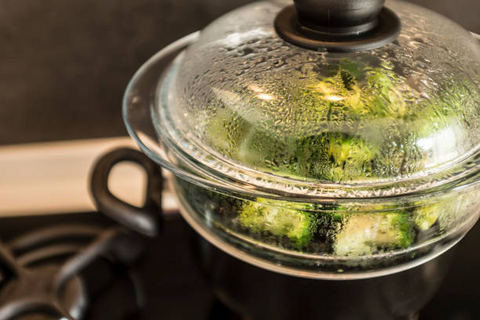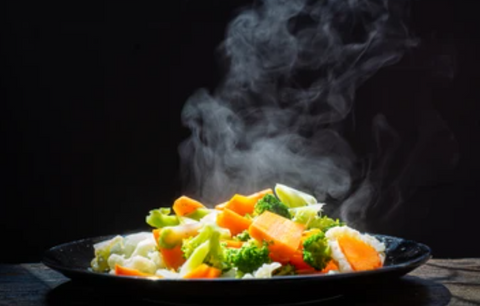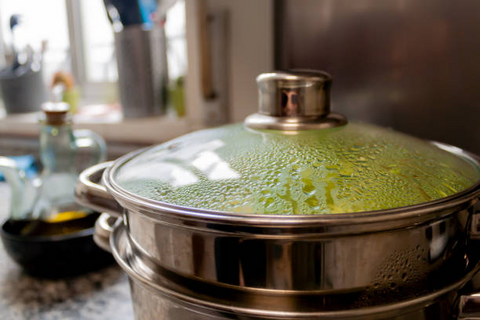When it comes to cooking, there are many methods to choose from, but steam cooking stands out as a superior option. This ancient technique has been used for centuries, and its popularity has recently surged due to its numerous benefits. This article explores the reasons why steam cooking is superior to other methods and how it revolutionizes the way we approach food preparation.
Introduction to Steam Cooking
Steam cooking is a technique that utilizes steam to cook food. Unlike boiling, where food is submerged in water, steam cooking involves suspending food over boiling water, allowing the steam to cook it gently. This method has been used for centuries and is making a resurgence in modern kitchens due to its numerous advantages.

Advantages of Steam Cooking
Health Benefits
One of the primary reasons why health-conscious individuals prefer steam cooking is its ability to preserve food's nutritional integrity. Unlike frying or boiling, which can lead to nutrient loss, steaming ensures that vitamins, minerals, and antioxidants remain intact.
Preserves Nutrients
The gentle heat of steam minimizes nutrient degradation, making it an ideal cooking method for vegetables, which can lose their vitamins when overcooked. By retaining nutrients, steam cooking helps promote overall health and well-being.
Enhanced Flavor
Contrary to popular belief, steam cooking doesn't equate to bland food. In fact, steaming enhances the natural flavors of ingredients without the need for excessive seasoning or oil. This results in dishes that are not only healthier but also more flavorful.
Versatility
Steam cooking can accommodate a wide range of ingredients, from vegetables and seafood to grains and proteins. Whether you're cooking a simple side dish or a complex meal, steam cooking offers unparalleled versatility.

How Steam Cooking Works
Steam cooking works by heating water to its boiling point, creating steam that surrounds the food being cooked. This gentle, moist heat cooks food evenly and efficiently, ensuring that it retains its moisture and texture.
Comparison with Other Cooking Methods
Boiling
While boiling is a common cooking method, it can lead to nutrient loss and flavor dilution. In contrast, steam cooking preserves nutrients and enhances flavor, making it a healthier and tastier alternative.
Frying
Frying, although delicious, often requires large amounts of oil, which can contribute to unhealthy dietary habits. Steam cooking eliminates the need for excessive oil, resulting in lighter, healthier dishes.
Microwaving
While convenient, microwaving can lead to uneven cooking and texture changes in food. Steam cooking provides gentle, uniform heat, ensuring that food is cooked evenly and retains its natural texture.
Tips for Steam Cooking
Equipment Needed
To get started with steam cooking, you need only a steamer basket or a bamboo steamer. These affordable, easy-to-use tools can be found in most kitchen supply stores.
Preparing Ingredients
Before steaming, ensure that your ingredients are properly cleaned and trimmed. This helps maintain their flavor and texture during the cooking process.
Cooking Times
Different ingredients require different cooking times when steaming. Be sure to consult recipes or guidelines to ensure that your food is cooked to perfection.
Environmental Benefits
In addition to its health and culinary advantages, steam cooking is also environmentally friendly. By using minimal water and energy compared to other cooking methods, steam cooking helps reduce your carbon footprint and conserve resources.

Conclusion
In conclusion, steam cooking offers a multitude of benefits that make it a superior choice for health-conscious individuals and culinary enthusiasts alike. From preserving nutrients and enhancing flavor to its versatility and environmental friendliness, steam cooking is a simple yet powerful technique that can revolutionize the way you approach cooking.
FAQs
- Is steam cooking suitable for all types of food?
- Yes, steam cooking can accommodate a wide range of ingredients, including vegetables, seafood, grains, and proteins.
- How does steam cooking compare to other healthy cooking methods like baking?
- While baking also preserves nutrients, steam cooking offers the added advantage of retaining moisture and enhancing flavor.
- Can I steam cook frozen vegetables?
- Yes, frozen vegetables can be steamed directly from frozen, although they may require slightly longer cooking times.
- Is steam cooking faster than other methods?
- Steam cooking can be faster for certain foods, but cooking times vary depending on the ingredients and the method used.
- Can I add seasoning to food while steaming?
- Yes, you can season food with herbs, spices, and aromatics before or during the steaming process to enhance flavor.

